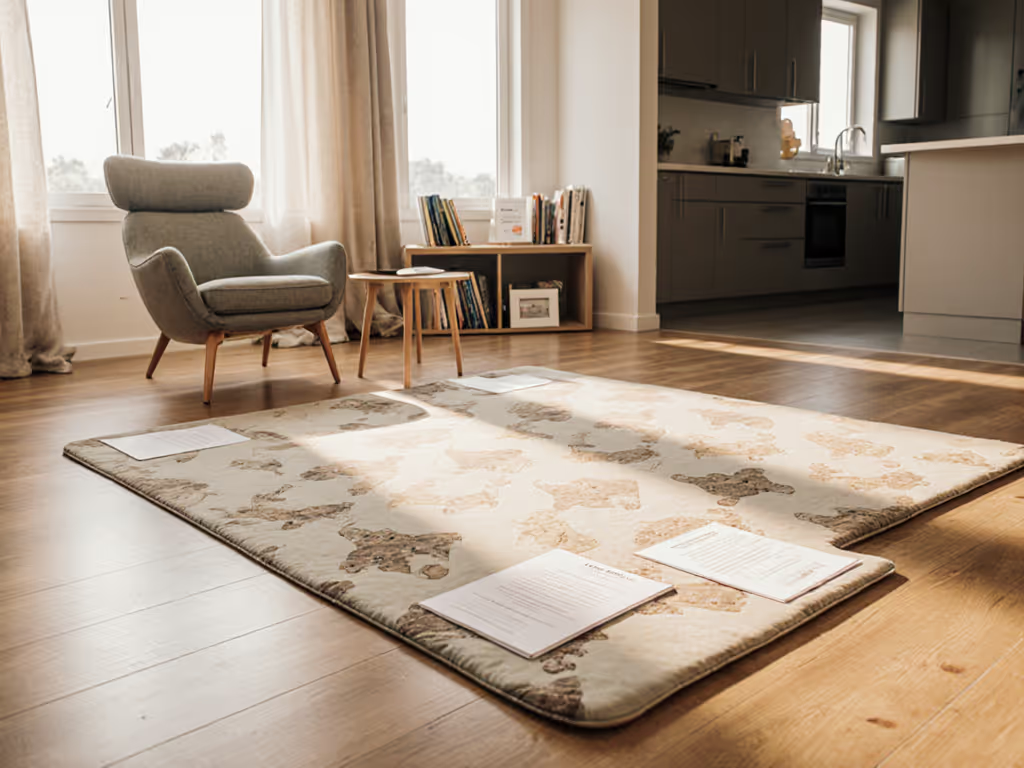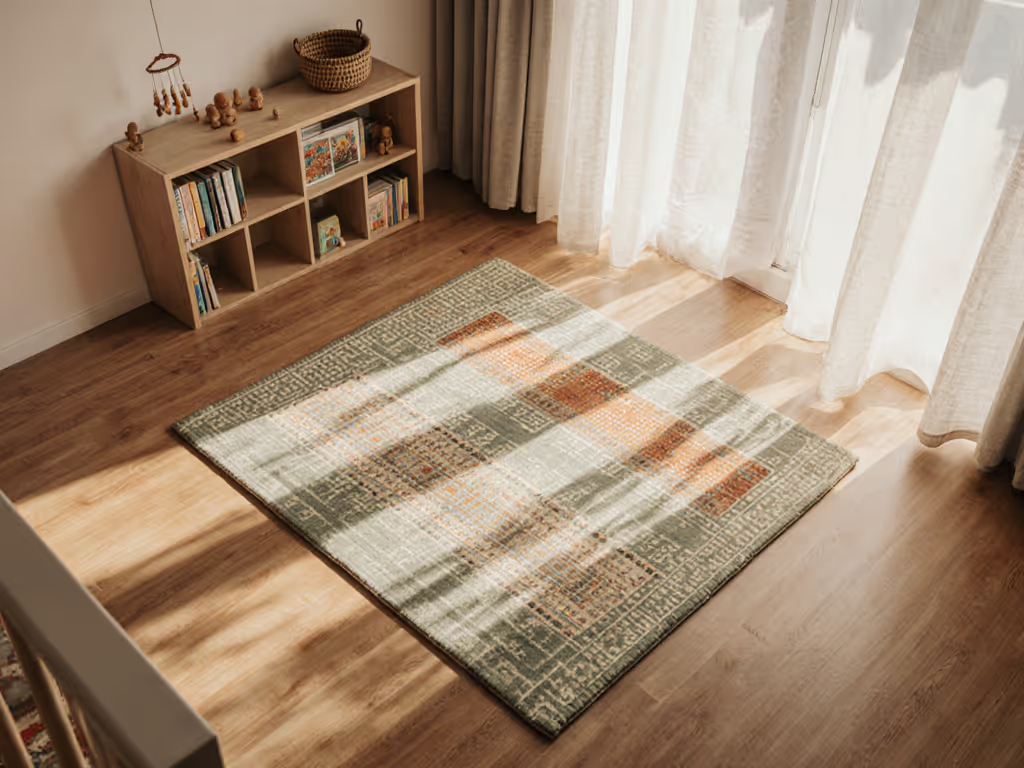
How to Identify Safe Play Mats for Babies and Kids
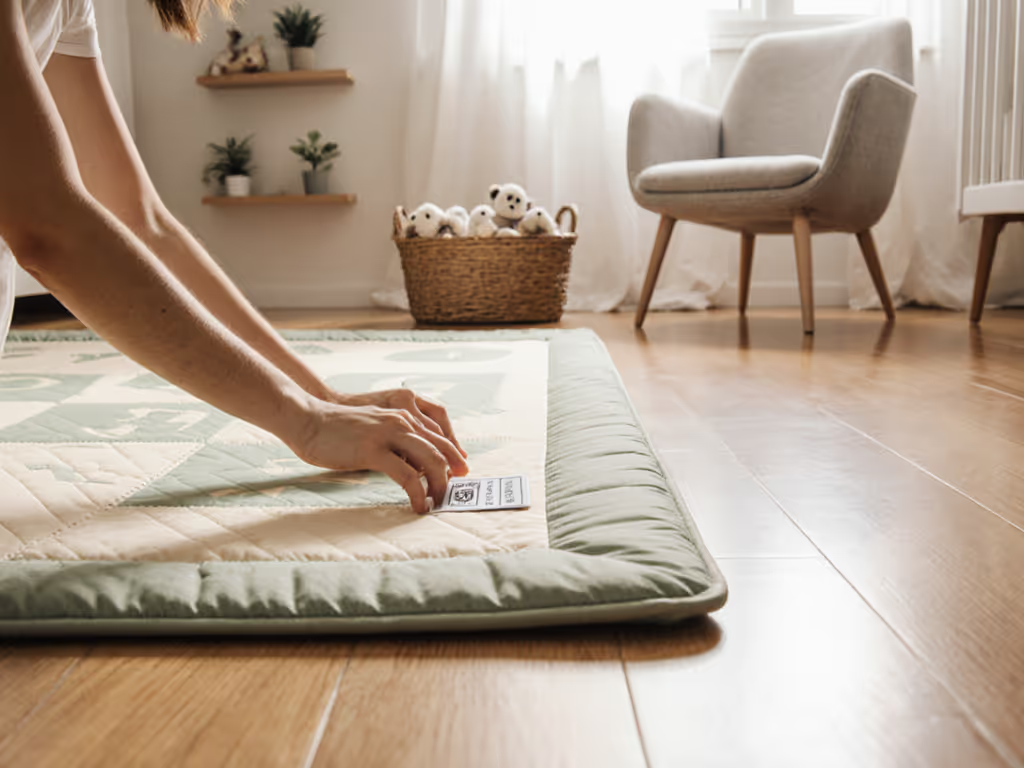
Did you know that over 75 percent of parents incorrectly assume all play mats are equally safe? Making the right choice goes far beyond picking a cute pattern. Your child's health depends on understanding everything from toxic risks to durability. By learning how to recognize trusted certifications and scrutinizing materials, you protect your little one from hidden dangers while creating a safer play space at home.
Quick Summary
| Key Point | Explanation |
|---|---|
| 1. Prioritize safety certifications | Look for recognized safety certifications like EN71 and ASTM F963 to ensure the play mat is safe for your child. |
| 2. Avoid toxic substances | Choose mats free from harmful chemicals like phthalates and heavy metals to minimize health risks. |
| 3. Select appropriate size and design | Measure your space and consider your child's mobility when choosing a play mat to ensure safety and comfort. |
| 4. Ensure durability and ease of cleaning | Select mats made from durable, water-resistant materials that are easy to clean and maintain for long-term use. |
| 5. Review independent testing results | Seek brands that provide transparent test results and read customer reviews to ensure the mat's quality and safety. |
Step 1: Assess material safety certifications and labels
Knowing how to read safety certifications will help you choose a play mat that keeps your little one protected from harmful chemicals. In this step, you will learn how to decode those important labels and understand what makes a play mat genuinely safe.
Start by looking for comprehensive safety certifications like the EU Toy Safety Directive (EN71) or the US Toy Safety Standard (ASTM F963). These aren't just fancy stickers - they represent rigorous testing that checks for dangerous substances and potential hazards. When a play mat has these certifications, it means independent laboratories have verified its safety across multiple dimensions.
Pay close attention to specific chemical clearances. The best play mats will explicitly state they are free from problematic compounds like BPA, formamide, phthalates, formaldehyde, and heavy metals. For example, some brands like Little Wiwa and Eeveve proudly advertise their mats as 100% PVC free and hypoallergenic.
Pro Tip: Don't just glance at certifications. Take a moment to understand what they actually mean for your child's safety.
Another crucial detail is checking for a valid Children's Product Certificate. This document indicates the manufacturer has conducted thorough third party testing and meets stringent safety requirements. Reputable brands will be transparent about their testing processes and willing to share certification details.
As you move forward, remember that certifications are your first line of defense in selecting a safe play surface for your little one. Each label tells a story about product safety - and your job is to become an informed reader who understands those stories.
Step 2: Check for toxic substances and allergen risks
Protecting your child from hidden chemical hazards means becoming a detective of materials and understanding what might lurk beneath the surface of seemingly innocent play mats. In this step, you will learn how to spot potential toxic substances and minimize allergen risks before they become a problem.
Start by understanding the most common chemical culprits. Research shows that certain materials like polyethylene (PE) and PVC can release volatile organic compounds (VOCs) when exposed to treatments like UV bleaching. These compounds can include potentially toxic alkanes, alcohols, and ketones that you definitely do not want near your child's play area.
Pay special attention to phthalates a group of chemicals that have been restricted in toys across the European Union since 1999. Specific phthalates like DEHP, BBP, and DBP are linked to reproductive and developmental toxicity. Look for play mats that explicitly state they are free from these regulated substances.
Pro Tip: When in doubt, contact the manufacturer directly and ask for detailed chemical composition reports.
Allergen risks require similar scrutiny. Hypoallergenic materials are not just a marketing buzzword. They represent a commitment to reducing potential skin irritation and respiratory reactions. Look for mats made from materials that are naturally resistant to dust mites, mold, and bacterial growth.
As you continue your safety investigation, remember that transparency is key. Brands truly committed to child safety will readily share testing information and chemical analysis. Your careful research now can prevent potential health risks down the road.

Here's a summary of key toxic substances and allergen considerations:
| Risk Factor | Concerns | What to Look For |
|---|---|---|
| Phthalates | Reproductive toxicity | "Phthalate-free"<br>EN71/ASTM F963 |
| VOCs | Chemical off-gassing | Low-VOC materials<br>No PVC/PE |
| Heavy Metals | Neurological hazards | Lead-free<br>Third party tested |
| Allergens | Skin/respiratory issues | Hypoallergenic<br>Mite-resistant |
| Formaldehyde/Formamide | Carcinogenic risk | Clear safety certificate |
Step 3: Evaluate surface design and size for your space
Choosing the right play mat is like solving a perfect puzzle that fits your home and your child's developmental needs. In this step, you will learn how to select a surface that maximizes safety, comfort, and functionality across different room sizes and play stages.
Start by measuring your available space and considering your child's current mobility level. Developmental safety experts recommend specific space requirements that can guide your selection. For rolling babies, aim for at least 36 inches of clearance around the mat. If you are creating a crawling runway, look for mats around 48 inches long to give your little one plenty of exploration room.
Size options vary widely. Some brands offer compact rectangular mats around 140 × 100 cm perfect for average bedrooms, while others provide larger 200 × 140 cm surfaces ideal for spacious living rooms or open layouts. Round mats work wonderfully in smaller rooms where space is at a premium.
Pro Tip: Always leave a 12 inch border around your mat for caregiver interaction and to prevent accidental edge falls.
Think beyond dimensions. On hard floors, choose mats at least 1 inch thick with non slip backing that meets CPSIA safety standards. The surface texture matters too soft enough for comfortable play but firm enough to support early movement milestones.
As you prepare to make your selection, remember that the perfect play mat adapts to your child's growing needs.
 What works for a rolling infant will look different for an energetic toddler exploring their world.
What works for a rolling infant will look different for an energetic toddler exploring their world.
Step 4: Inspect durability, cleaning, and maintenance features
Think of your play mat as a long term investment in your child's safety and comfort. In this step, you will learn how to select a mat that can withstand spills, tumbles, and endless playtime while remaining easy to clean and maintain.
Durability starts with material selection. Different mat types offer unique advantages. Interlocking foam tiles around 30×30 cm or 60×60 cm provide incredible flexibility. They allow you to customize your play area and replace individual sections if needed. Foldable mats measuring up to 1.8×2 m work wonderfully for families with limited space, while traditional tatami style mats offer robust cushioning for high traffic play zones.
Cleaning potential is just as crucial as durability. Look for surfaces that can be quickly wiped down with mild disinfectant. Water resistant materials that do not absorb liquids will save you countless cleanup hours. Some mats feature antimicrobial surfaces that naturally resist bacteria growth preventing odors and potential health risks.
Pro Tip: Always check manufacturer instructions before using any cleaning solution to avoid damaging the mat's surface or compromising its safety features.
Consider maintenance requirements carefully. Mats that are lightweight and easy to move will simplify your cleaning routine. Some modern designs feature removable covers or sections that can be machine washed adding an extra layer of convenience for busy parents.
As you continue your search remember that a great play mat is more than just a surface. It is a protective space where your child can explore learn and grow safely.
Step 5: Verify independent test results and reviews
Think of this step as your final safety checkpoint. Independent testing and real world experiences are your secret weapons in finding a play mat that truly protects your child. In this section, you will learn how to dig deeper than marketing claims and uncover genuine product performance.
Start by seeking out brands that offer transparent third party testing. Some manufacturers like Eeveve make their safety certificates publicly available directly on product pages. This level of openness is a strong signal of confidence. If a brand is willing to share detailed laboratory test results, they are likely standing behind the quality of their product.
Customer reviews provide invaluable real world insights. Look beyond star ratings and read detailed experiences. Parents who have used the mat with their own children can share nuanced observations about durability, comfort, and actual performance that marketing materials cannot capture. Pay attention to reviews discussing long term use wear and tear and how the mat holds up under daily child play.
Pro Tip: Contact manufacturers directly and ask to see full product testing reports. Reputable brands like Little Wiwa welcome such inquiries and will readily share documentation.
Check for specific validation of safety standards. Legitimate play mat brands will have compliance certificates from recognized international testing organizations. These documents confirm the mat meets stringent safety requirements across multiple dimensions.
As you gather information remember that thorough research now can prevent potential safety issues later. Your careful investigation is an investment in your child's well being and peace of mind.
![]()
Discover Play Mats Designed for Real Peace of Mind
Are you feeling overwhelmed sorting through confusing labels and certifications when searching for the safest play mat for your child? The article "How to Identify Safe Play Mats for Babies and Kids" highlights just how challenging it can be to truly understand what keeps your baby protected from hidden toxins and allergens. Parents face stress not only from deciphering technical jargon but also from the fear of choosing a mat that may not pass trusted third-party testing or truly fit their unique home and lifestyle.
At Floorbloom, we have made it our mission to give you clarity and confidence. Our collection emphasizes real transparency, providing detailed information about important certifications like EN71 and ASTM F963. We also ensure our mats are tested for the chemical hazards discussed in the article, such as being fully free from phthalates, heavy metals, and VOCs. With surfaces that are both easy to clean and designed for growing families, you do not have to compromise style for safety. Ready to take the next step and find a play mat that matches your standards? Visit our curated selection and experience the difference of shopping with guidance you can trust. Don’t wait—give your family the safer play space they deserve today.
Frequently Asked Questions
How can I tell if a play mat is safe for my baby?
Look for comprehensive safety certifications like the EU Toy Safety Directive (EN71) or the US Toy Safety Standard (ASTM F963). Verify that the mat is free from harmful substances like BPA and phthalates by checking the product labels or descriptions.
What specific toxic substances should I look out for in play mats?
Be cautious of phthalates, VOCs, heavy metals, and allergens that can be harmful to your child. Check for mats that explicitly state they are free from these substances and have the relevant safety certifications.
How do I choose the right size play mat based on my space?
Measure your available play area and consider your child's mobility level. For example, leave a 12-inch border around the mat for safety and interactions, aiming for at least 36 inches of clearance for rolling infants or larger mats for crawling babies.
What maintenance features should I consider when selecting a play mat?
Look for play mats that are water-resistant and easy to clean, such as those that can be wiped down with a mild disinfectant. Choose lightweight mats that simplify moving and cleaning, with some models even offering removable covers that are machine washable.
How can I verify the durability of a play mat?
Check the material and design of the mat, looking for options like interlocking foam tiles or foldable mats that offer flexibility and durability. Read customer reviews for insights on long-term performance and how the mat holds up under typical play conditions.
What role do independent test results play in choosing a safe play mat?
Independent test results provide assurance that a play mat meets safety standards and is free from harmful substances. Seek brands that publish transparent testing reports to gain confidence in their product's safety and quality.
Recommended
Related Articles

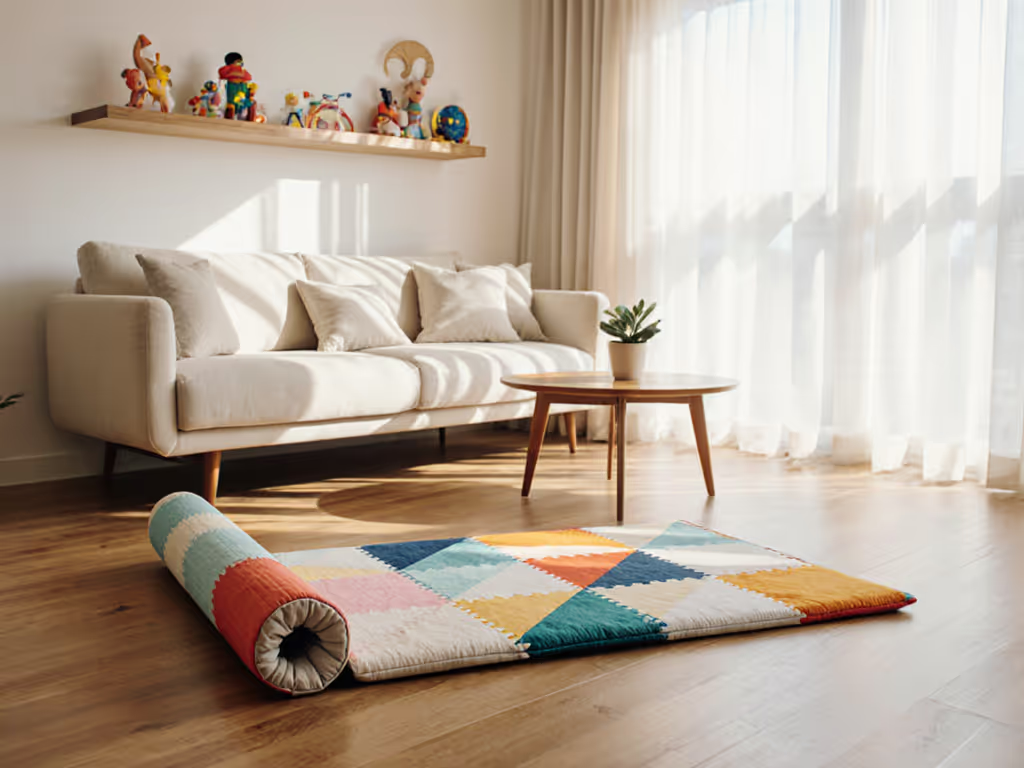
What Is a Foldable Play Mat? Complete Guide
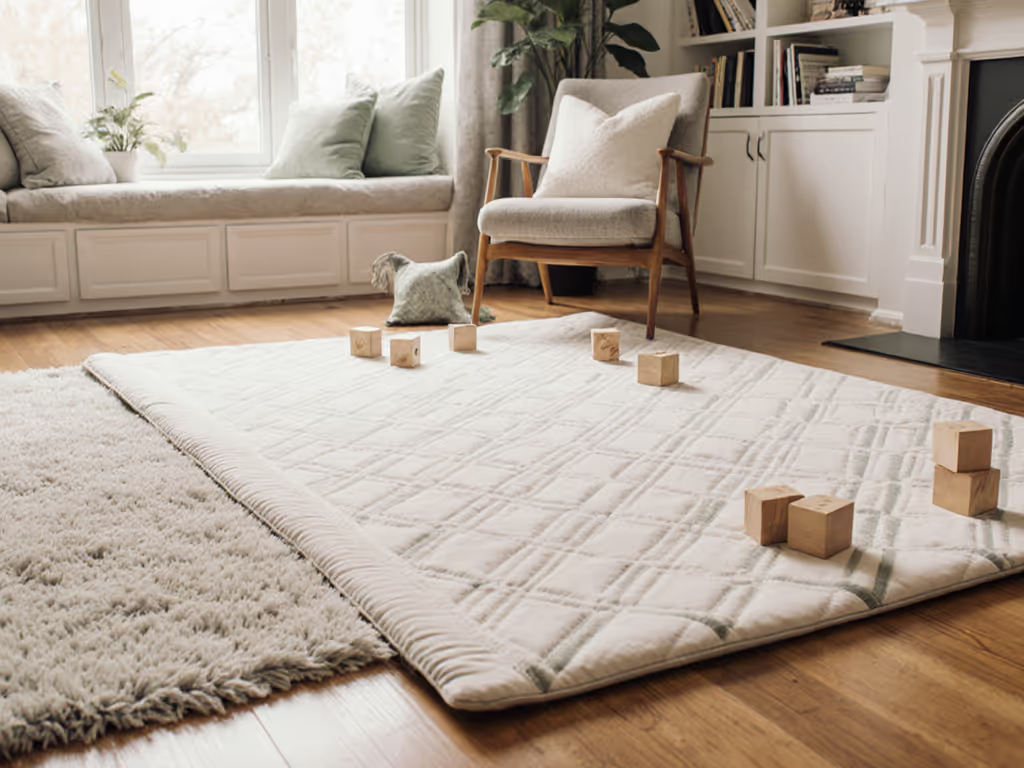
Role of Play Mats: Complete Guide for Safe Play Spaces
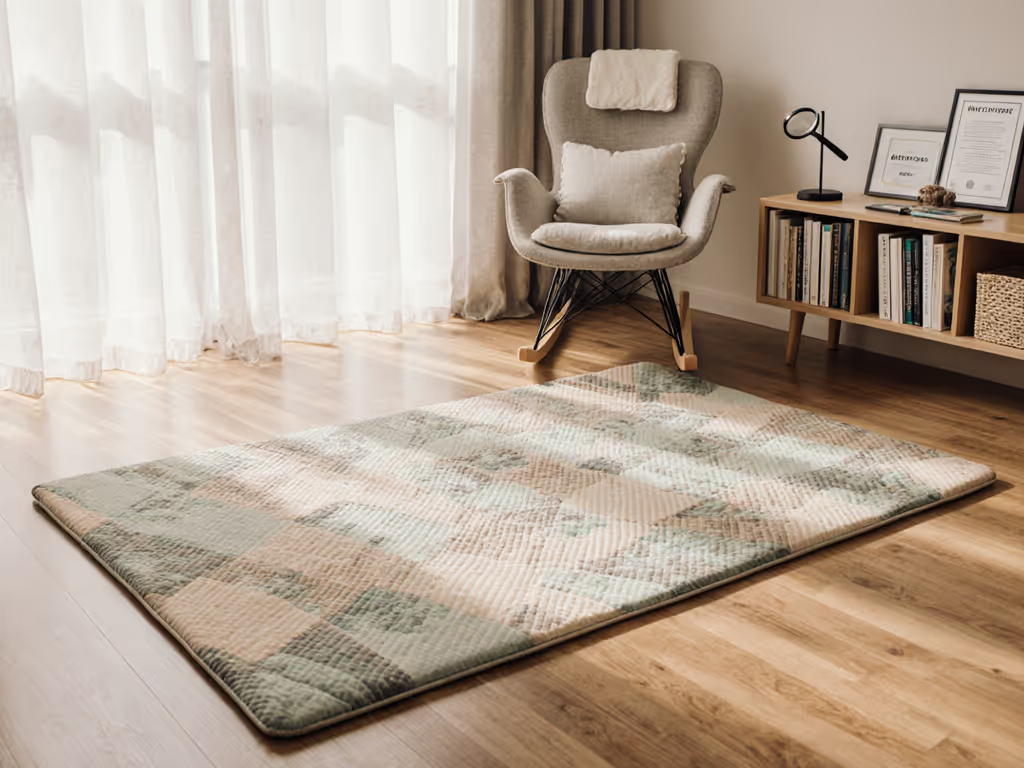
Play Mat Safety Standards Explained: Essential Guide
